Marie Antoinette's Necklace: A Brilliant Story with a Sad Ending

Marie Antoinette, the Queen of France, was famous – and infamous – for her extravagant lifestyle.
One aspect of this was her jewelry collection, which included some truly stunning pieces.
However, one necklace above all would be remembered as an epic story with a tragic ending.
As someone who specializes in jewelry, I have always been fascinated by the stories that accompany important pieces: it's not just about luxury and beauty.
There is also often mystery, betrayal, or sadness.
The tale of Marie Antoinette's necklace has it all.
It is a good example of how power struggles played out during the French Revolution.
It encompasses not only royal jewels but also their falling out of fashion and ultimate destruction.
This article will look at the amazing history behind Marie Antoinette's necklace: where it came from, what happened to it, and why people are still talking about one piece of bling more than 200 years after its dramatic fall from grace.
Get ready to enter a world glittering with precious stones, grand living – and some fascinating stories relating to one very famous queen.
The Necklace's Creation

Marie Antoinette's necklace had one ironic twist: it wasn't even hers. King Louis XV commissioned the showpiece as a gift for his mistress, Madame DuBarry.
DuBarry was the king's official favorite and was lavished with diamonds (many of which would eventually become part of Marie Antoinette's jewelry).
In 1772, Louis XV approached two Parisian jewelers who were legendary in their own time: Charles Auguste Boehmer and Paul Bassenge—makers to the kings of France.
These men were known not only for their extraordinary talent but also for their patience: They could spend years crafting a single masterpiece.
And that is exactly what they did when it came to Marie Antoinette's diamond necklace.
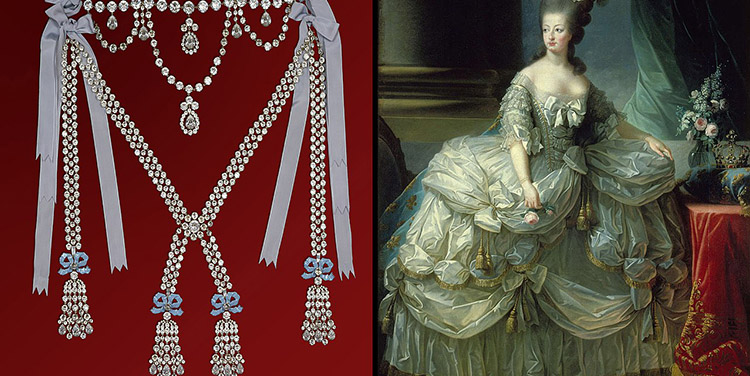
They were asked to create a spectacular piece "the likes of which have never been seen before." And so they did, spending two years on the task.
When finished, the necklace contained 17 diamonds the size of pigeon eggs, a three-link garland, and countless pendants.
Each smaller stone was cut in the round style (so each sparkled like crazy), while bigger stones were pear-shaped (also super dazzling).
The diamond jewelry, appraised at 2 million livres (about $15.1 million in today's exchange rates) by jewelers, wasn't ready until after Louis XV died unexpectedly of smallpox in 1774.
His grandson and successor, Louis XVI, declined to pay for it — and DuBarry was banished from the palace.
Marie Antoinette's Necklace and Jeanne de la Motte
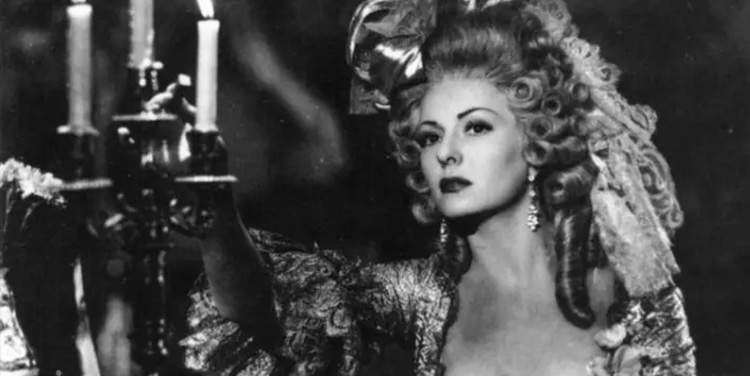
The Marquise de Boulainvilliers was renowned for her benevolence and never failed to help out those in need.
Assisting an unusual beggar woman, she changed the life of Jeanne in 1763.
The girl begged on the streets but claimed that she had royal connections.
It transpired that Jeanne really did have noble blood – her father was Jacques Saint-Rémy, a descendant of Henry II who lost all his money and died, leaving his family penniless.
Boulainvilliers placed the children at a boarding school (the girls) and a military academy (the boys).
When they left school, thanks to Boulainvilliers' kindness again, the sisters were lodged in a convent for aristocratic young ladies.
However, one sister was wayward by nature and ran away from home – abandoning her younger sibling.
In 1780, Saint-Rémy's daughter married officer Nicholas de la Motte.
Marie Antoinette's Necklace and The Cardinal's Dreams
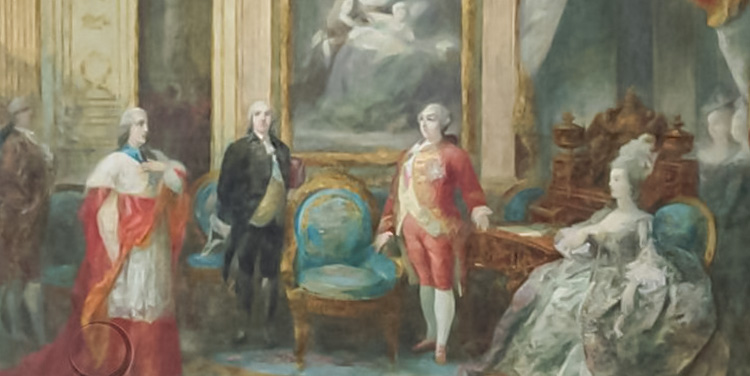
The new wife was desperate to move to Paris. She wrote endlessly for help to Versailles.
Genealogists were even called in at court and proved where the beggar had come from, allowing her husband a promotion and transfer to the capital.
But it wasn't enough for de la Motte. She wanted Marie Antoinette's assistance.
To catch the queen's attention, the countess faked fainting fits – but it backfired.
Stories about de la Motte's dramatic behavior reached Antoinette herself. She simply ordered that Jeanne should never be allowed near her.
So de la Motte looked for another way, and in 1783, she met Cardinal Louis de Rohan.
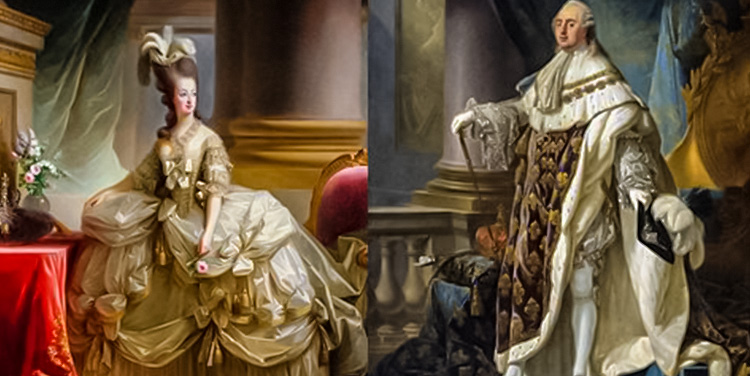
He had dreams of becoming first minister, but they just weren't happening – because the royal couple loathed him.
And so Jeanne decided to work through him instead – by pretending he was a close friend of the queen.
Thanks to De la Motte plus her lover Retaux de Villette, letters started being written on behalf of Marie Antoinette by de la Motte – who also set up a secret meeting between Rohan and a courtesan (who pretended to be Marie Antoinette).
By 1784, news hit town about The Affair Of The Necklace – and Jeanne wanted that necklace!
Redemption of Marie Antoinette's Necklace
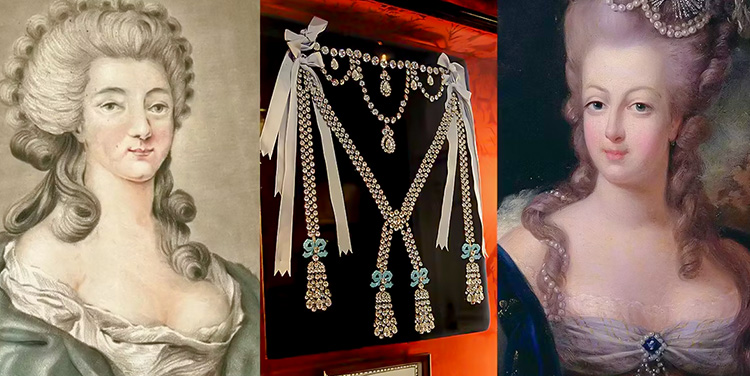
Following their covert meeting, the cardinal was prepared to do whatever it took to please the queen — something the countess was happy to exploit.
Working alongside Rétaux, they penned a letter in which Marie Antoinette discreetly asked for assistance purchasing the necklace.
If everything went according to plan, Jeanne would not only acquire a diamond necklace but also a handsome payment from jewelers who had run-up debts buying top diamonds that were added.
The plot envisaged that these gems would be paid for over two years in eight installments.
Because even his eminence couldn't afford them outright, Rohan requested a written agreement.
Jeanne provided this document, too, and it subsequently played an important role in exposing her deceit.
On 1 February 1785, with a great ceremony, Cardinal de Rohan presented Marie Antoinette's diamond necklace to Countess de la Motte.
The Diamond Necklace Affair
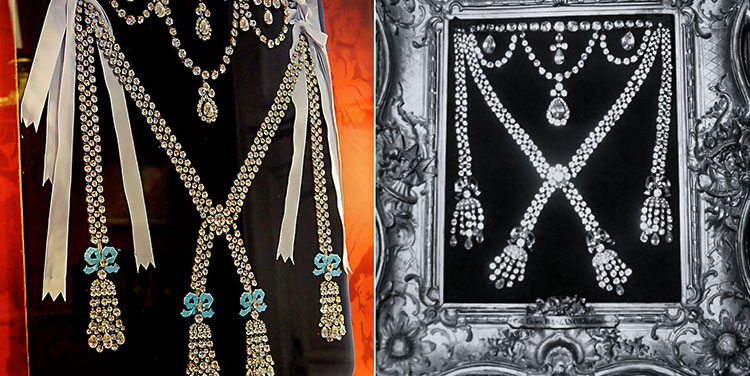
The entire plan was ruined thanks to the countess's greed.
Within twenty-four hours, the jewelers' guild had contacted the gendarmerie in Paris to complain that somebody was trying to sell high-quality diamonds at a suspicious price.
While the gendarmes were arresting Rétaux de Villette, Nicholas de la Motte went off to London with the diamonds for sale.
At this point, Jeanne's life became even more luxurious – and even more suspect.
The makers of Marie Antoinette's necklace now approached the queen directly – and instantly realized they were dealing with someone who hadn't got a clue what was going on.
From what she managed to tell them, all they understood was that their client's name had been used in some kind of fraud involving Cardinal Louis de Rohan.

She didn't like him much anyway, so she instructed that he be arrested, too: it took 24 hours for Count Cagliostro's wife and business partner to find themselves locked up.
Sadly for Marie Antoinette, the French people disliked her so much that they believed it might be true.
The queen's extravagance had always provoked a negative reaction from the public, and here was their reason. Although the woman was convicted, she managed to escape from prison.
The countess fled to London, where she rejoined her husband and even published memoirs in which she poured more scorn on the queen.
Though Marie Antoinette was never to own the diamond necklace, her reputation never recovered, and – fanned by those who loathed her during the Revolution – she would ultimately be sentenced to death, too.
The Necklace's Role in the French Revolution
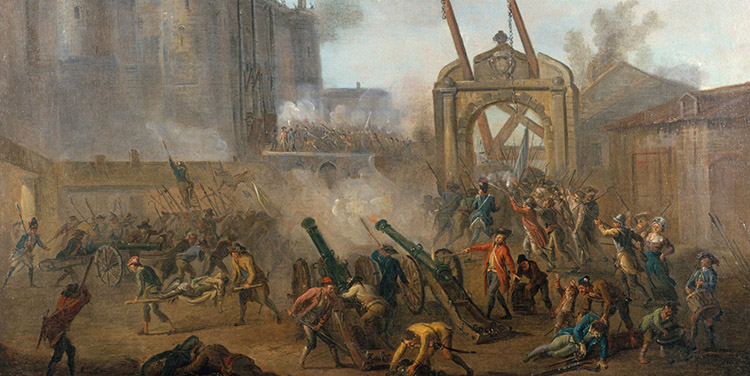
Playing a substantial part in the French Revolution, the necklace caused people to dislike Marie Antoinette and eventually played a role in her downfall.
The scandal surrounding it gave ammunition to those who were already criticizing the queen for living too well.
It struck many as ridiculous and offensive that someone could spend so much on one piece of jewelry (even if it was not actually bought) while so many went hungry.
It helped turn antipathy into hatred — not hard when ordinary people had lost their livelihoods, and some were literally starving, but surely harder than would otherwise have been the case.
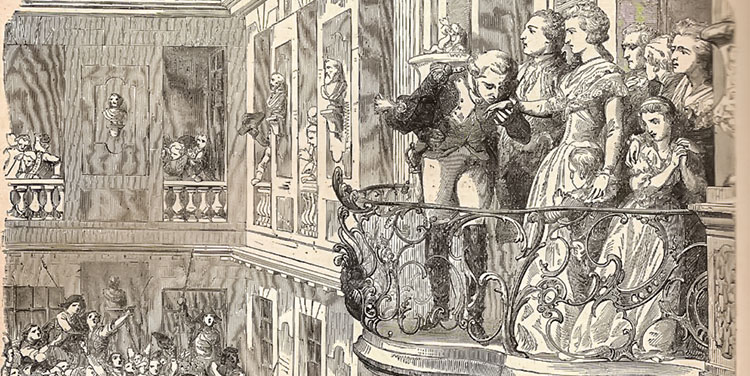
As tensions rose during the Revolution, it became a symbol of everything rotten about France's ancien régime: an aristocracy more interested in its comfort than how others might be suffering – exactly what they rebelled against.
An important caveat is that Antoinette did nothing wrong with regard to this necklace: she did not acquire or misuse it.
But by then, her reputation had soured sufficiently for public opinion to have turned against her, arguably enough even for there to be no going back.
The Aftermath and Legacy of the Necklace
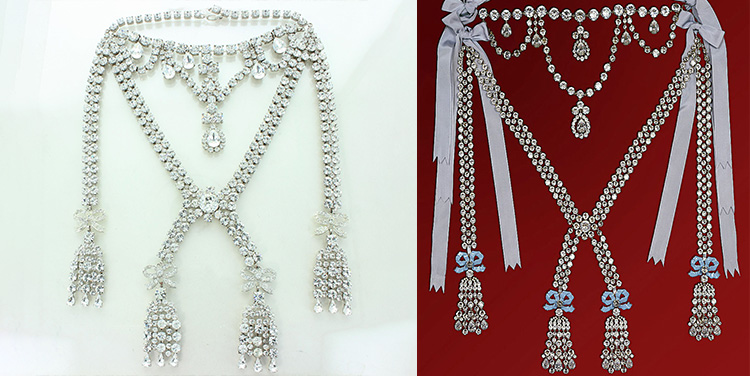
The necklace scandal had a lasting impact on the people involved and left a permanent mark on Marie Antoinette's reputation.
The woman who hatched the plan, Jeanne de la Motte-Valois, was convicted of fraud and sentenced to life in prison.
Cardinal Rohan, whom she had fooled, was not found guilty but did suffer public humiliation.
Marie Antoinette became unfairly associated with the affair and blamed for it by many in France.
It further damaged her already tarnished reputation and helped fuel anti-monarchy sentiment during the French Revolution.
The legacy of the necklace scandal goes well beyond any personal damage done to Marie Antoinette – although that alone would be significant enough.
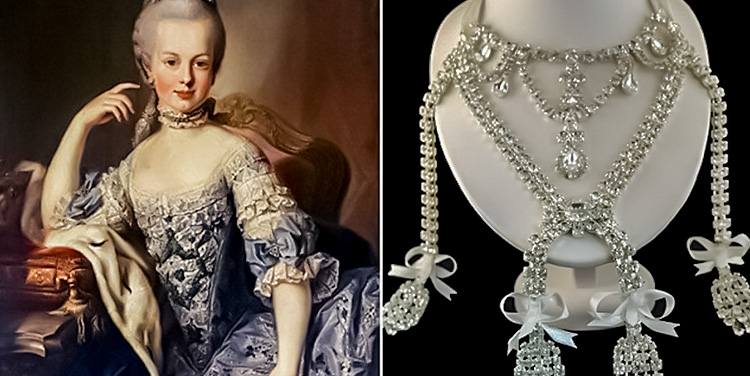
It became a symbol of decadence that fed into revolutionary beliefs about an out-of-touch monarchy more interested in its luxury than its subjects.
Even now, Marie Antoinette's name is often synonymous with profligacy because of this notorious jewelry set and provides one example of how reputations can become warped by public perceptions amid scandal or downfall.
At a time when social unrest is growing around wealth gaps across much of Europe today, that serves as something worth remembering.
Although Marie Antoinette's necklace was scandalous, there are many other pearl necklaces today that you can wear with pleasure and make everyone jealous. Visit White Victoria and choose yours!
Bottom Line

The captivating tale of Marie Antoinette's necklace intertwines the worlds of luxury, deceit, and tragedy.
It stands as a reminder that when opulence clashes with an increasingly disgruntled society, consequences can be far-reaching.
The story also formed part of the backdrop to Marie Antoinette's eventual downfall during the French Revolution – further fuelling public resentment towards her.
Today, it is not just a symbol of excess but also a reminder of how perception shapes history and how powerful it can be in framing people for centuries to come.
And its brilliant story ends where much else in life does: not quite happily ever after.


Leave a Comment